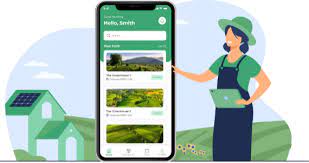We all understand that the Internet of Things refers to the rapidly growing network of connected objects that are able to collect and exchange data in real time using embedded sensors. With the delightful adoption rates of IoT, most of the connected devices around us have penetrated almost every aspect of life. Then be it agriculture, healthcare, education, manufacturing, fitness, home automation, transport, law and order, the possibilities are endless.
IoT specifically in agriculture is playing a critical role. In the last few decades, agriculture has seen huge transformations in terms of its techniques and usage of modern approaches along with super-smart gadgets. In line to that now IoT is literally redefining the way farming looked in India. Farming now is innovative, strategic, technology-driven, and efficient with the usage of smart IoT and automation.
IoT in Agriculture
There are many types of IoT applications in agriculture in general. These smart solutions prove instrumental by optimizing agricultural practices, minimizing waste, developing climate resilience, and providing timely agricultural advisory.
FarMart is a Krishi or smart farming app that provides cutting-edge network, seamless services and empowers farming community, retailers and traders across India. It fosters an interconnected community where sharing, support and synergy comes alive. Farming apps like FarMart are creating a digital marketplace where farmers can list their produce and directly connect with retailers or consumers. This eliminates unnecessary middlemen, ensuring farmers get a fair price and retailers receive fresher produce.
Some of the applications of IoT are:
- Agricultural sensors – There are smart farming sensors located across the fields to collect data of various environmental parameters. This data is collected and saved over the cloud. This provides fine details of soil quality, temperature, and other variables. This enables farmers to have detailed analysis of both the topography and resources in the desired area.
- Farming drones – Drones are used by farmers for crop surveying, soil and land analysis, livestock tracking, and monitoring. Farmers can also use pesticides for crops accordingly and in the desired manner and quantity.
- Smart Greenhouses – They can automatically adjust various parameters such as temperature, humidity, irrigation, or lighting. This can be done remotely using IoT and connected devices, which aids in a hassle-free, predator-safe, efficient crop conducive environment.
- Monitoring climate conditions – This is a very important feature as it allows easier climate predictions and weather patterns. With smartphones, farmers can conveniently monitor crops, yield, livestock, and even equipment. Becoming climate-proof is another important aspect the modern agriculturists are looking forward to. This can be achieved with space constraints in controlled environments powered by data provided by smart IoT sensors. Many precision farming apps like FarMart provide access to up-to-date weather information. Farmers can make informed decisions based on weather forecasts, helping them schedule planting, harvesting, and other essential tasks.
- Crop management – Crop rotation, management, and monitoring can be made easier with insights provided by data around crop growth, anomalies, crop health, precipitation levels, humidity, and climatic conditions. Crop management devices can change the game for farmers and make their decision-making more aligned to profitability. For example – FarMart allows farmers to tailor their cultivation practices and give them insights on the right type of fertilizers and crops suited for the land.
- Water management – Using too much or too little irrigation may prove to be hazardous to crops. This makes appropriate watering or, to say, water management critical. IoT-connected sensors can help in deciding the need based on land’s moisture content, crop requirement, and climate conditions. Farmers can use this data to act accordingly then.
- Cattle monitoring and management – IoT agriculture sensors can be attached to the farm animals to get details around their health, temperature, grazing pattern, activity, and nutritional levels.
Smart farming is transforming agriculture by providing accurate, data-driven solutions for crop management and monitoring. Krishi apps or agriculture apps on mobile have become invaluable tools in this evolution, offering farmers the ability to make more informed decisions that lead to increased yields, resource efficiency, and environmental sustainability. There are endless possibilities of IoT in agriculture; however, it comes with its challenges but it will certainly play an increasingly crucial role in meeting the growing global demand for food while minimizing the impact on our planet.


